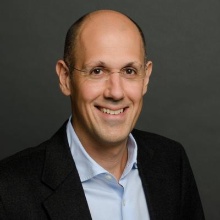As of mid-May, Prof. George Biros from the University of Texas at Austin will do a research stay at the University of Stuttgart as part of the Argyris Visiting Professorship which honors since 2014 internationally renowned scientists from Germany and other countries who are active as outstanding representatives of their discipline in simulation science.
In the public Argyris Lecture, which is a crucial part of the Argyris Visiting Professorship, he will speak about "Towards direct numerical simulation of blood flow in microcirculation” on 22 May 2019. Further information and the abstract can be found here. Registration is not required. The talk will be followed by a Get Together at the SimTech building.
Prof. George Biros is currently professor of mechanical engineering and leader of the ICES Parallel Algorithms for Data Analysis and Simulation Group at the University of Texas at Austin, USA. The ICES is one of the world’s leading institutes in interdisciplinary research in the field of scientific computing. His research covers parallel algorithms, numerical algorithms for integral and differential equations, inverse problems, data assimilation, computational statistics, biological complex fluids, blood rheology, soft tissue and cardiovascular mechanics, and medical image analysis. With these topics, he addresses core topics of the new SimTech cluster of excellence – data integration, applications in the spirit of the cluster vision “Digital Human”, and a tight integration of application requirements with efficient mathematical and computer science methods.
George Biros is a two-time winner of the Gordon Bell Prize, the most prestigious price in the scientific computing community with a very strong focus on both real-life relevance and high efficiency on cutting edge supercomputing architectures. Miriam Mehl, Principal Investigator at the Cluster of Excellence and Coordinator of Project Network 5, and her group have a long-term fruitful cooperation with Biros’ group that dates back to 2010 where they worked on blood flow simulation.


